In this article, we share six of the most shocking statistical observations from Westernston's 12-Minute Business Diagnosis that has been taken by entrepreneurs across the world in dozens of different sectors and industries. If you have not yet taken this quiz in order to dianose this business, you may do so here.
Some of these statistics may hit very close to home. Our intent in sharing these statistics is not to demotivate you. Rather, it is to demonstrate how easy it could be to stand hard and shoulders apart from your competitors who are also most likely making the same mistakes. Statistically speaking, of course.
In other words, business excellence doesn't need to be hard or complicated. You just need to go the extra mile. And that's not so hard either, as you will see.
So, without further ado, let's dive right into it...
-
Poor Follow-up Is The Norm
We asked business leaders how consistently they followup with their leads (prospective customers who have not yet bought).
In many cases, entrepreneurs pay good money in order to generate a list of prospective customers and clients. So these leads are paid for more often than not.
And yet, the results absolutely shocked us...
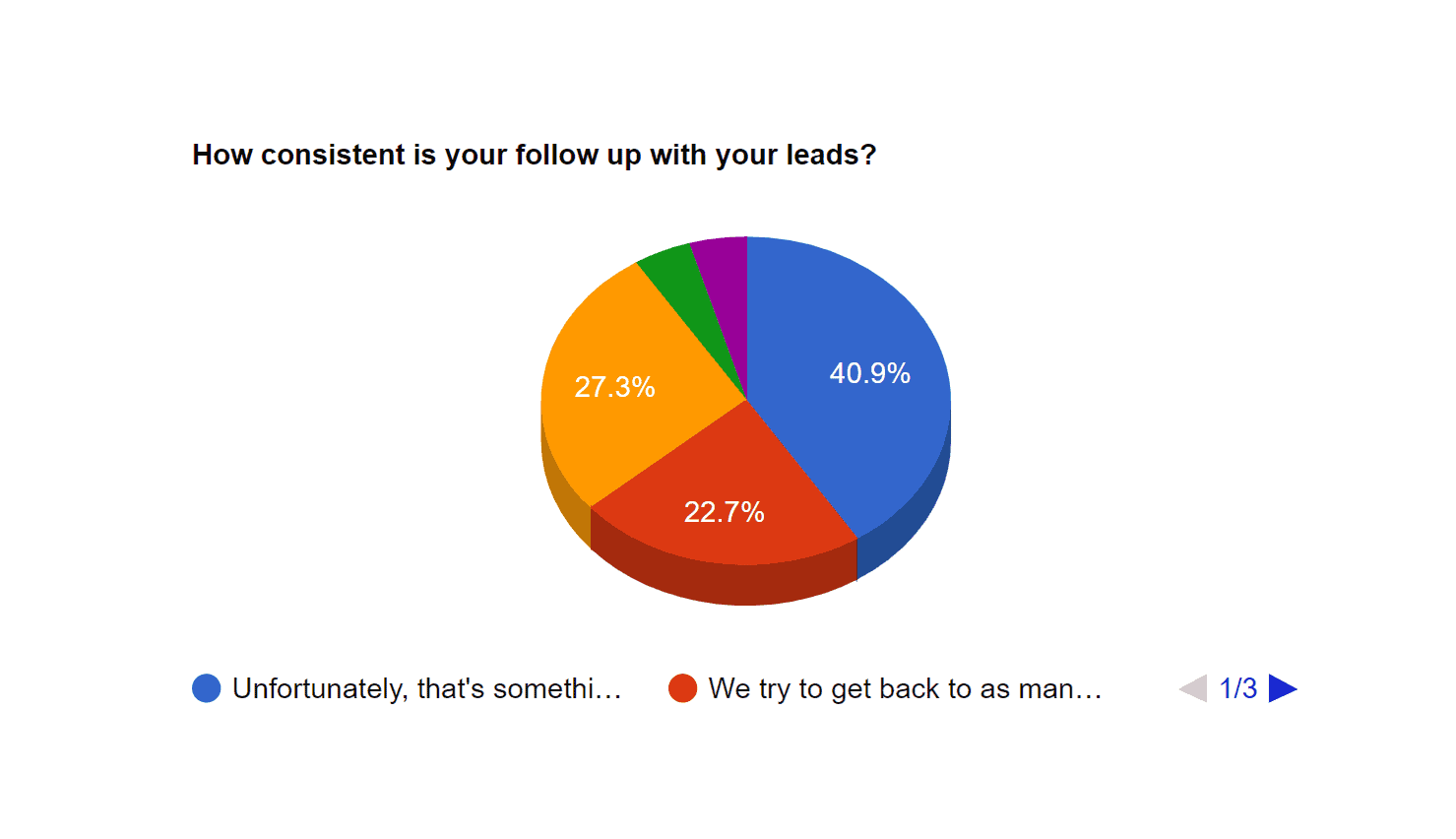 Poor follow-up is what nearly all small businesses offer.
Poor follow-up is what nearly all small businesses offer.
- 41% said, "Unfortunately, that's something we're working on, but as of now, we don't always follow up with all our leads."
- Another 22.7% chose, "We try to get back to as many people as we can, but we always miss some."
That means that nearly 2 in three businesses fail to follow up with their prospective clients adequately... even though they may be paying good money for bringing in those leads in the first place.
Our reaction to that is... "huh?".
It is baffling. One could argue it's almost crazy. Why spend money on advertising when you're not even going to follow-up with the people your advertising attracts?
And make no mistake...
You are paying money for advertising. Even if it is just in the form of the monthly rental you pay. Why, nobody wants to rent a space in the middle of a forest, even though rents could potentially be crazy low.
The Verdict:
Just follow-up.
Systemizing your follow-up could simply propel you ahead of nearly 65% of your competitors. Overnight. Just like that. It's so easy. It's just so fast.
And when you don't follow-up with someone, they believe (with good reason) that you might be inadequately helpful if and when they become a customer and require support.
-
Poor Follow-Up Continues All The Way From Prospects To Customers & Clients
You know how they say bad habits die hard?
Well, most businesses aren't just bad at following-up with prospective clients and leads. They're also bad at following-up with existing customers and past clients. Which is where the bulk of their revenue ought to come from.
We asked business leaders how frequently does their business follow-up with their existing or past clients.
And this is how they answered...
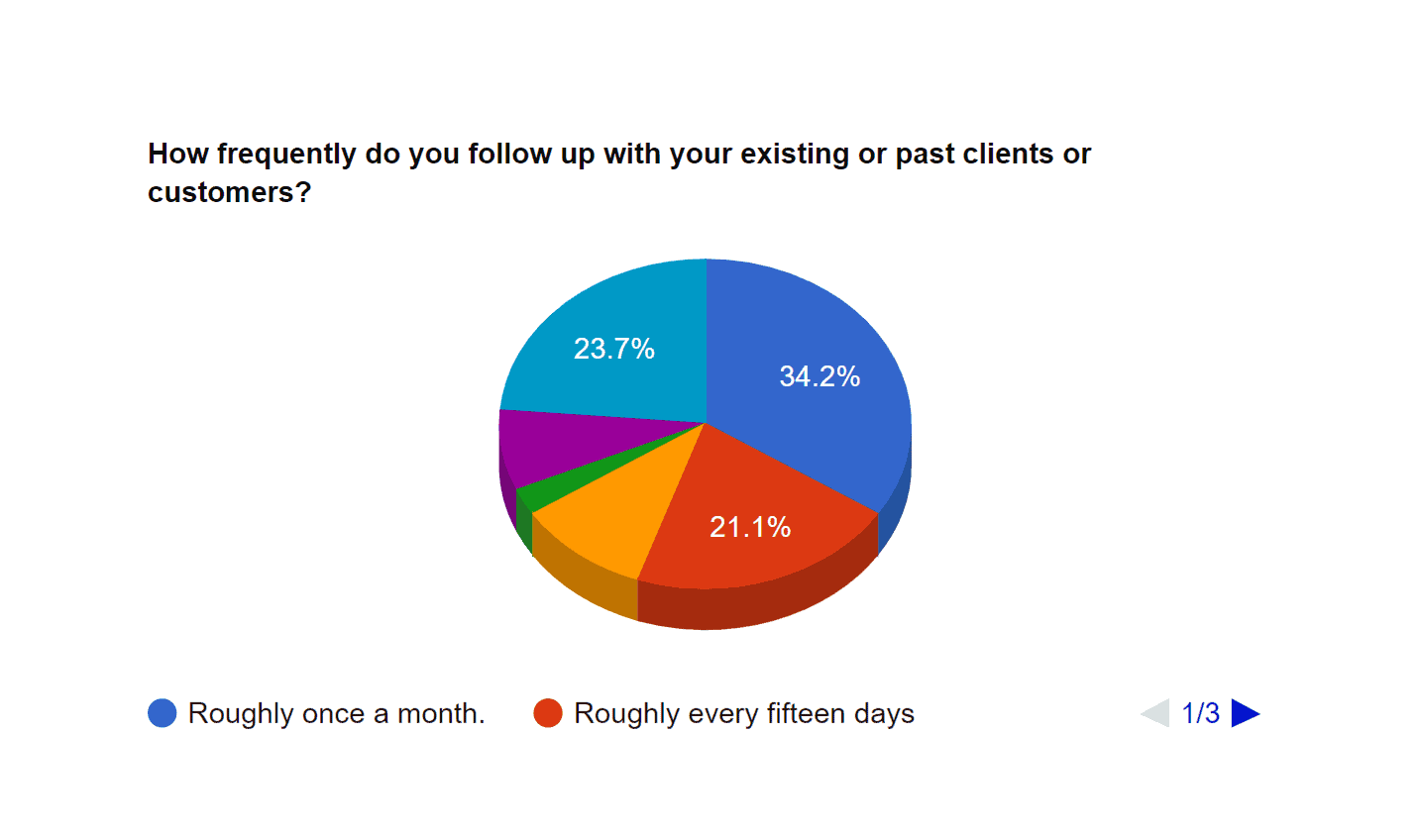 Poor followup with customers and clients is also the norm just the same as with prospective clients and leads.
Poor followup with customers and clients is also the norm just the same as with prospective clients and leads.
- 34.2% said, "Roughly once a month."
- Another 21.2% chose, "Roughly every fifteen days."
- Yet another 23.7% chose some variation of "We never follow-up with our existing customers and clients."
From what we can see... that is a WHOLE LOT of money being left on the table.
Nearly 80% of all small businesses follow-up very infrequently with their existing customers and clients.
Let's rephrase that...
If you follow-up with your existing clients and customers.... people who actually know you, like you and trust you enough to have given you their money in exchange for your products and/or services...
If you follow up with them at least once a week, you're already in the top 20% of all small businesses.
How cool is that?
Like we said at the beginning of this article, business excellence is not hard to achieve. It just takes focus and intent.
-
Small Businesses Just Simply Don't Have Continuity or Recurring Income Programs
Done right, continuity programs can create a stable and solid ongoing revenue stream for any business. And while so many entrepreneurs have told us "my business is different"... in almost every case, it is not only possible to have at least one (or more) continuity programs, it has also nearly always proven to be very profitable for them.
We asked entrepreneurs if their business has a recurring income component.
Here's how they answered...
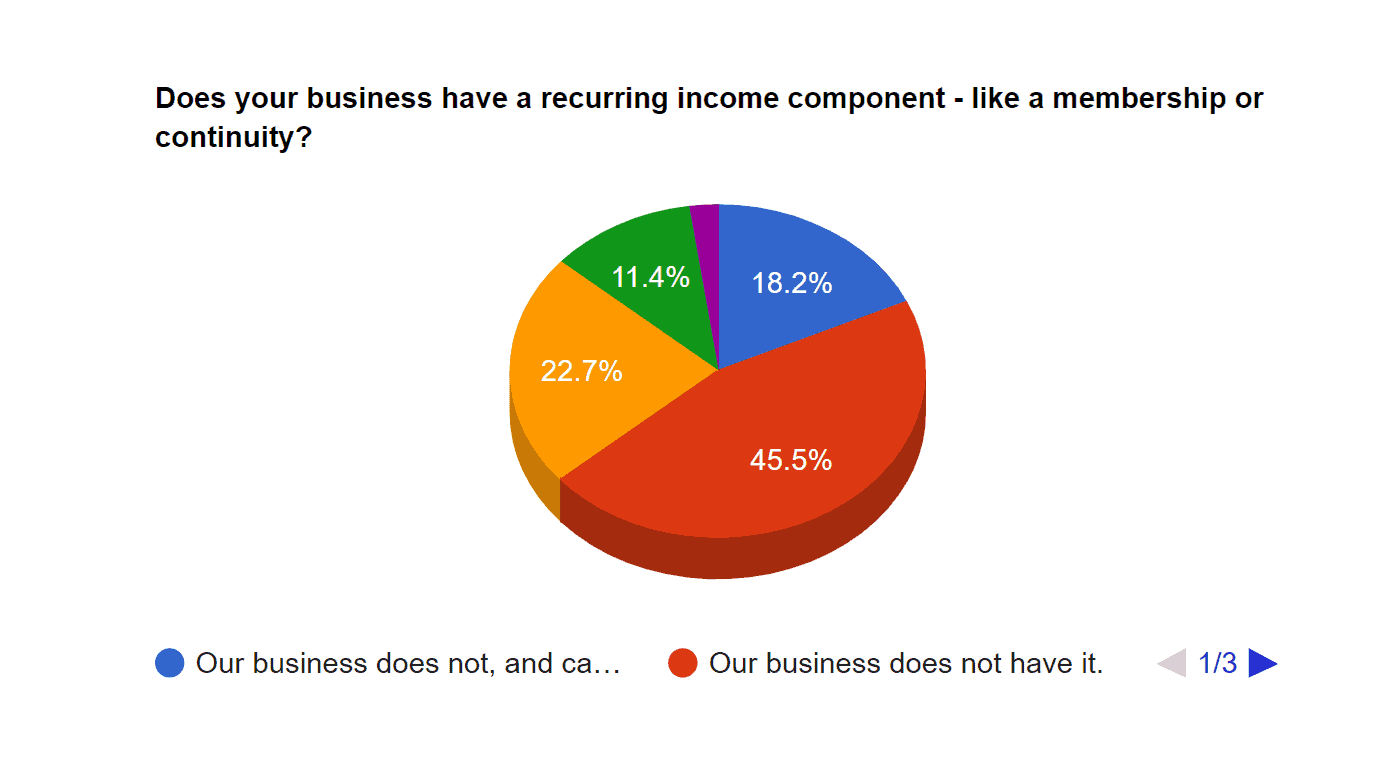 Small businesses just don't "do" continuity well.
Small businesses just don't "do" continuity well.
- 18.2% flat out refused to accept that continuity was even possible for their business.
- 45.5% simply said, "Our business does not have it."
- 22.7% said, "Our business has a recurring income component - but we don't get new members consistently… and it's not all that we'd hoped."
So 2 in 3 small businesses just don't have anything that brings in recurring income.
And combined with those that have a recurring revenue program but don't run it very well... you're already up to 86.4%.
In other words...
If you run a continuity program well, you're already well within the top 14% of all small businesses.
And here's the funny story...
Only 2.2% of all small businesses even have more than one recurring-revenue stream.
Let that sink in!
-
Over 70% of all small businesses have non-useful websites.
When asked if their business' website consistently brings in new leads and clients, entrepreneurs said...
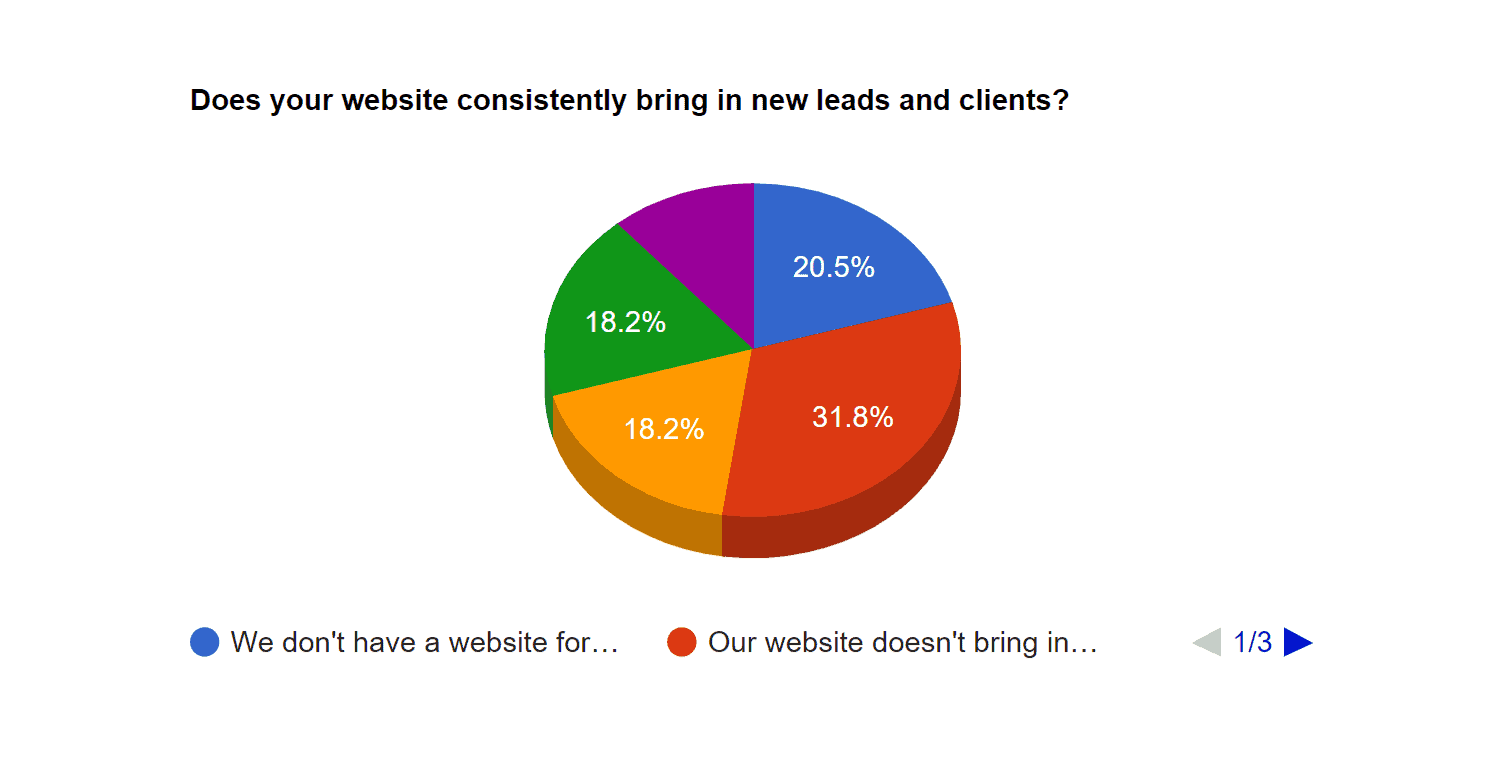 If your website doesn't bring in leads, you might as well not have it.
If your website doesn't bring in leads, you might as well not have it.
- 20.5% don't even have a website yet.
- 31.8% said, "Our website doesn't bring in any new business or leads other than an occasional contact form fill-out."
- 18.2% said, "Our website does get decent amount of traffic, but does not bring in leads consistently."
That's 70.5%.
70.5% of all small businesses either don't have a website, or their website doesn't help at all with getting new business.
In other words, they might as well not have it.
And therein lies your edge...
If you website merely receives traffic consistantly, youre within the top 30% of all small businesses.
And if your business' website generates new leads (and new business) for you, you're well within the top 11.3% of all small businesses.
Again, there's your simple hack.
Focus on developing a functional website that actually gets used by your audience, and you're well within the top 11.3%.
-
Poor Tracking
In the world of ecommerce, tracking is how you grow. It's how you scale. Tracking your various metrics allows you to figure out what it is that's bottlenecking your growth.
This much has been known since we started learning about e-commerce back in the early 2000's right after the dotcom bust.
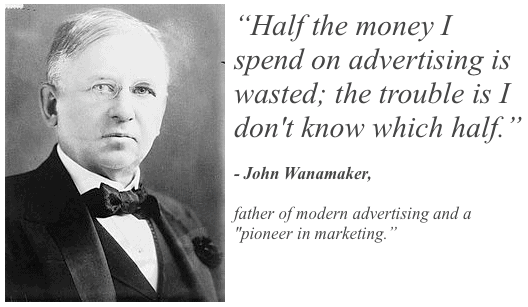
John Wanamaker famously said half of all advertising is wasted.
We actually disagree. We believe know way more than half of all advertising is wasted, simply because even today you target several million people in order to gain a few thousand clients and customers.
With that in mind, of course it is imperative to track your cost of acquiring new leads. The reality was shocking...
We asked entrepreneurs how well they actually knew their cost of acquiring leads.
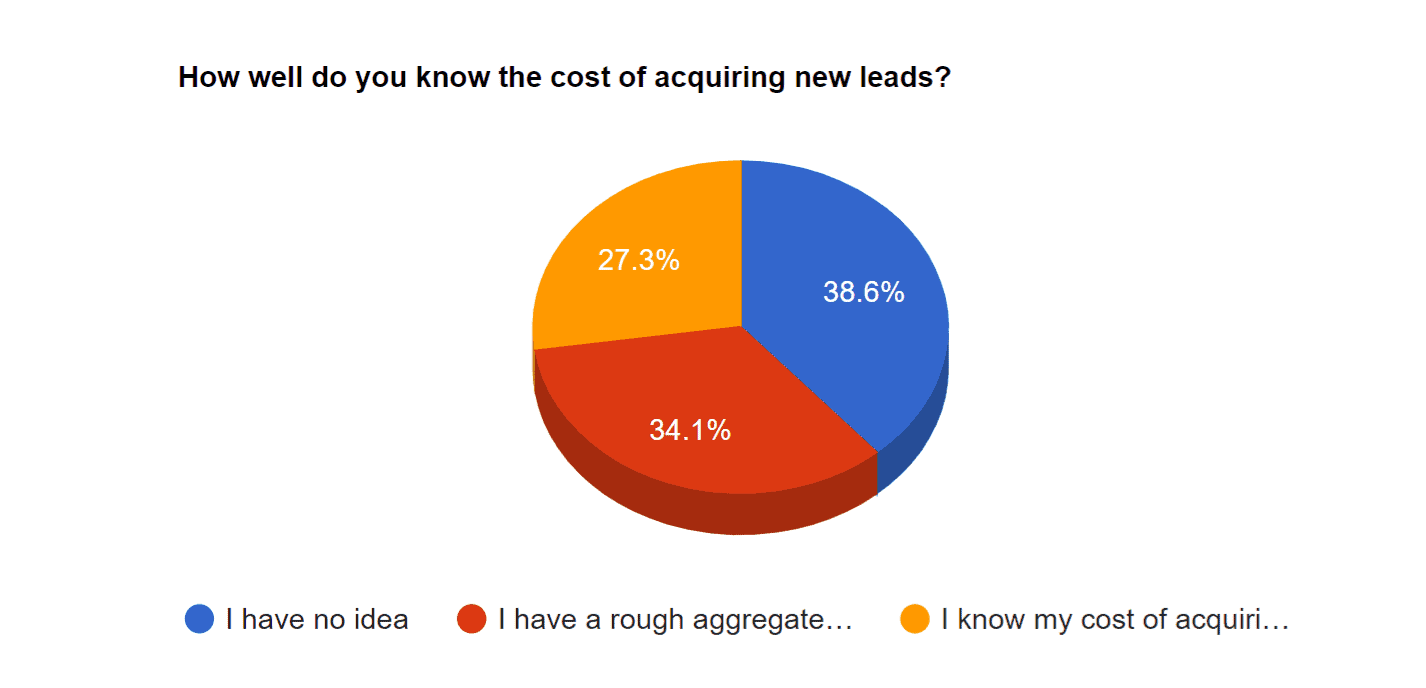 Tracking is the first step in growth
Tracking is the first step in growth
- 38.6% admitted to having no idea whatsoever.
- 34.1% confessed, "I have a rough aggregate idea. I derive my cost of lead acquisition by dividing my total marketing spend by number of leads obtained."
So 72.7% have either no idea, or very rough aggregates.
Our team at Westernston was particularly shocked by this one. We had kind of expected the other ones, but this one was unexpected.
If we spend $10,000 on Facebook ads this week, we could tell you our CPL (cost per lead or cost of acquiring one lead on an average) by the city/state we targeted, broken down by advertisement creative used, broken down by demographics (ages, genders), broken down by interests and so on.
While we did not expect small business owners to have as much granular data as we (and by extension our clients) have... we did expect most entrepreneurs to choose, "I know my cost of acquiring a lead from each individual source. I know which sources work best for me, and which don't work at all."
Because otherwise, why even try various sources in the first place?
Very shockingly, only 27.3% chose that option.
So if you're tracking your CPL by even sources, you're within the top quartile of all small businesses.
Frankly, we are amazed how little you'd need to do to be tracking more than three-fourths of your competitors.
-
Small Businesses Are Dying
Sounds like we're trying to deliberately dishearten you, doesn't it?
We assure you that we really aren't. We are just sharing what we have found...
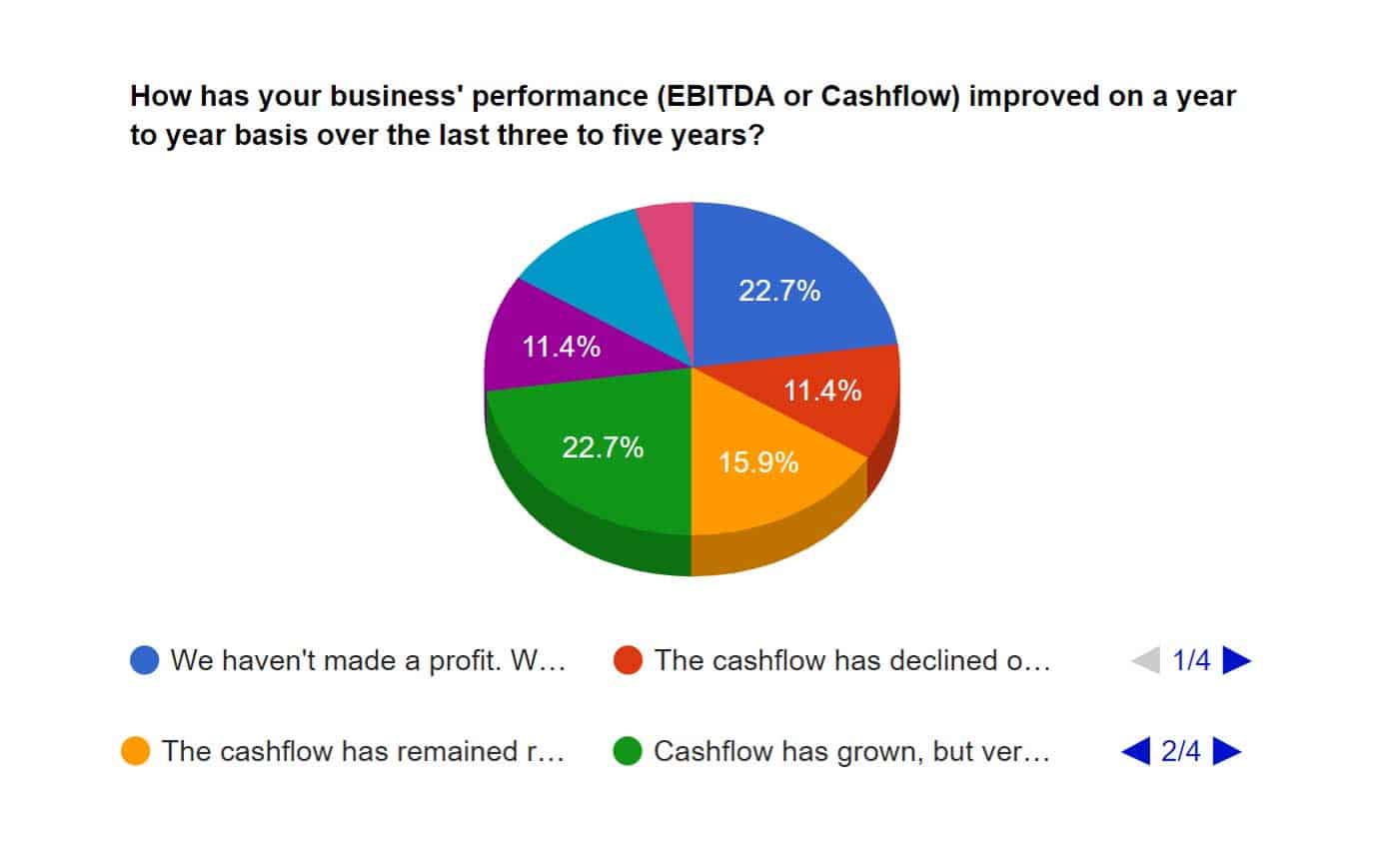 Cashflow growth is a great indicator of your business' health
Cashflow growth is a great indicator of your business' health
- 22.7% said, "We haven't made a profit. We've been in the red."
- 11.4% said, "The cashflow has declined over the last three to five years overall."
- 15.9% chose, "The cashflow has remained roughly the same. There have been temporary rises and falls, but it's largely been a sideways performance."
- 22.7% said, "Cashflow has grown, but very slowly. Less than 7% on a year to year basis."
If you take inflation into account (which isn't exactly the same as the official statistics because of several factors that are beyond the scope of this article)... businesses that have cashflows that are growing very slowly are barely breaking even. And that's 72.7% of all businesses.
This is in line with what we have all been observing in the real world.
72.7% of all businesses are either in the red, or barely breaking even when you take inflation and all the rounds of "Quantitative Easing" into account.
This is just how compounding works.
This is what we mean when we say "Forces of Nature Are Either Growing Your Business Or Killing It."
It's like muscular atrophy. Your muscles can either grow (be in a state of hypertrophy) or shrink (state of atrophy). Your business is either ahead of the curve, or getting left behind.
So that's it.
Your business can either be growing right now, or shrinking.
And the differentiators are almost all listed right here in this article.
If all you do is institute the following five changes within your business, you'll be well ahead of the curve:
- Create automatic follow-up systems with your prospects.
- Follow-up and communicate at least once a week with your current and past customers and clients.
- Create one or more recurring income streams for your business.
- Track your advertising campaigns.
- Optimize your website until it brings in a steady stream of new leads.
That's it. You'll be well within the top 10% of all small businesses just by default. And that reflects into the cashflow growth soon enough automatically.
Like we said at the beginning of this article... it's not hard. It's not expensive either. It's not particularly time-consuming. But it does position you ahead of most of your competitors.
We seriously recommend not making these mistakes that your competitors are likely making right now.
Until next time,
Team Westernston
